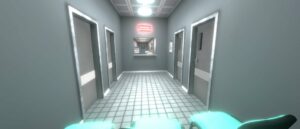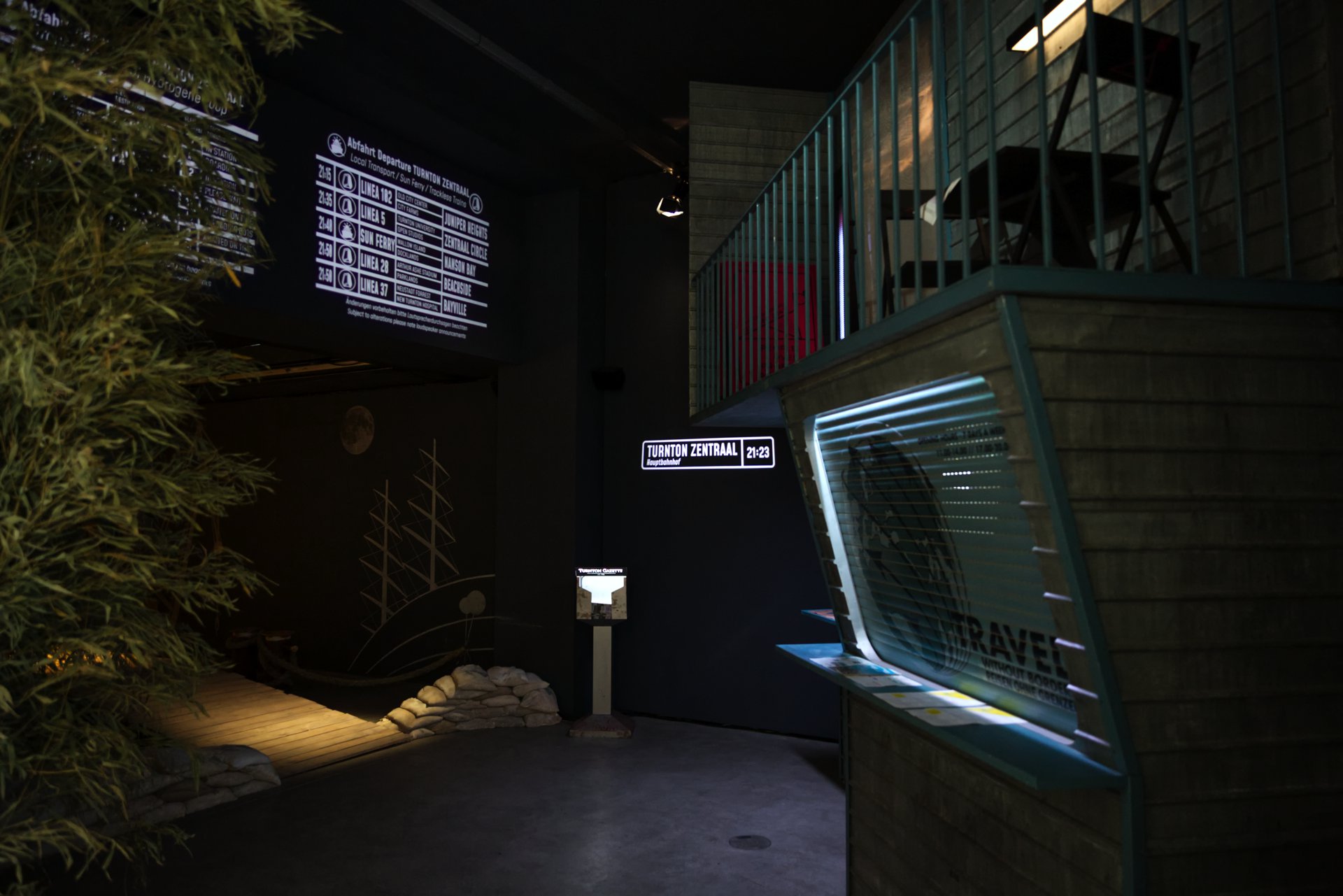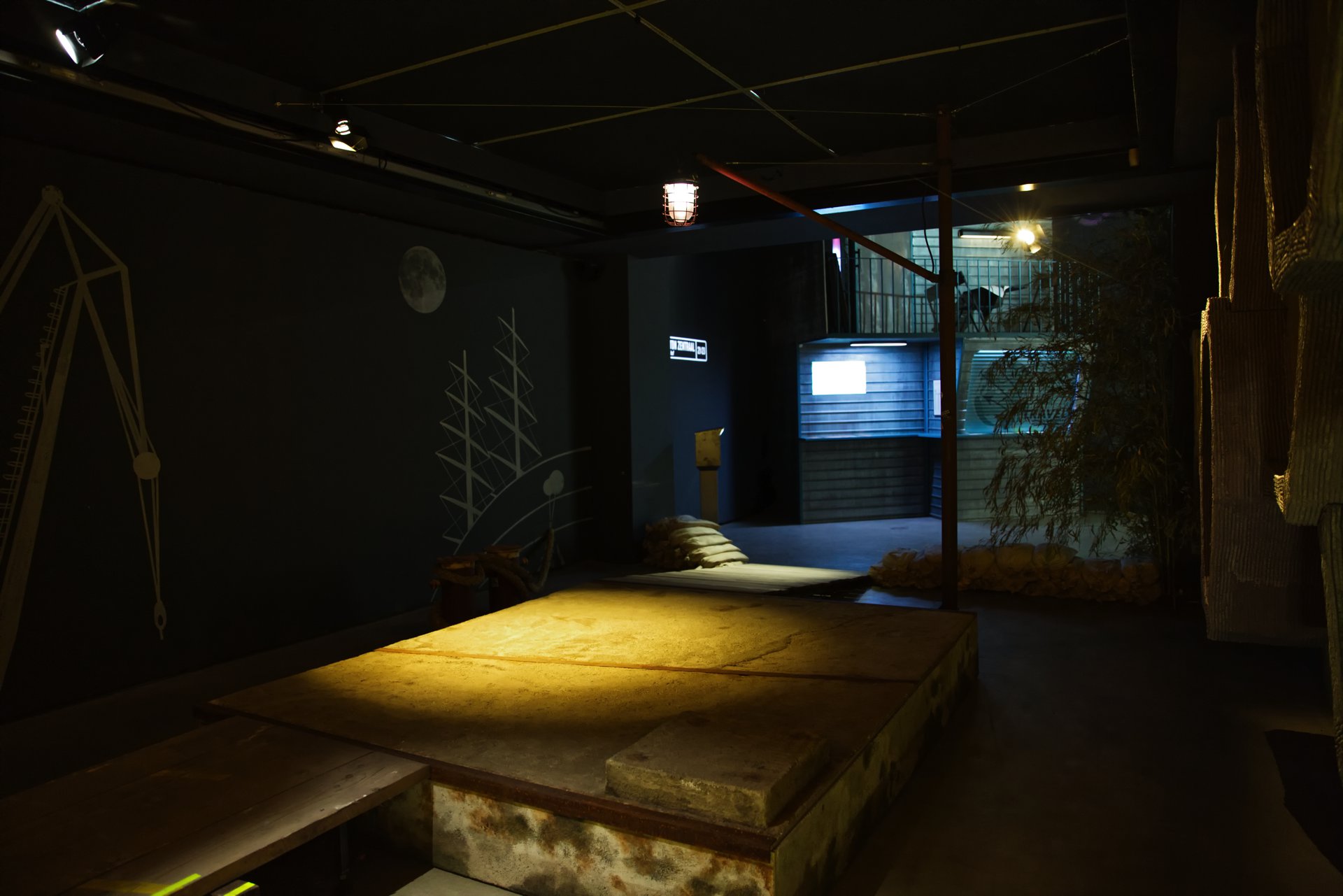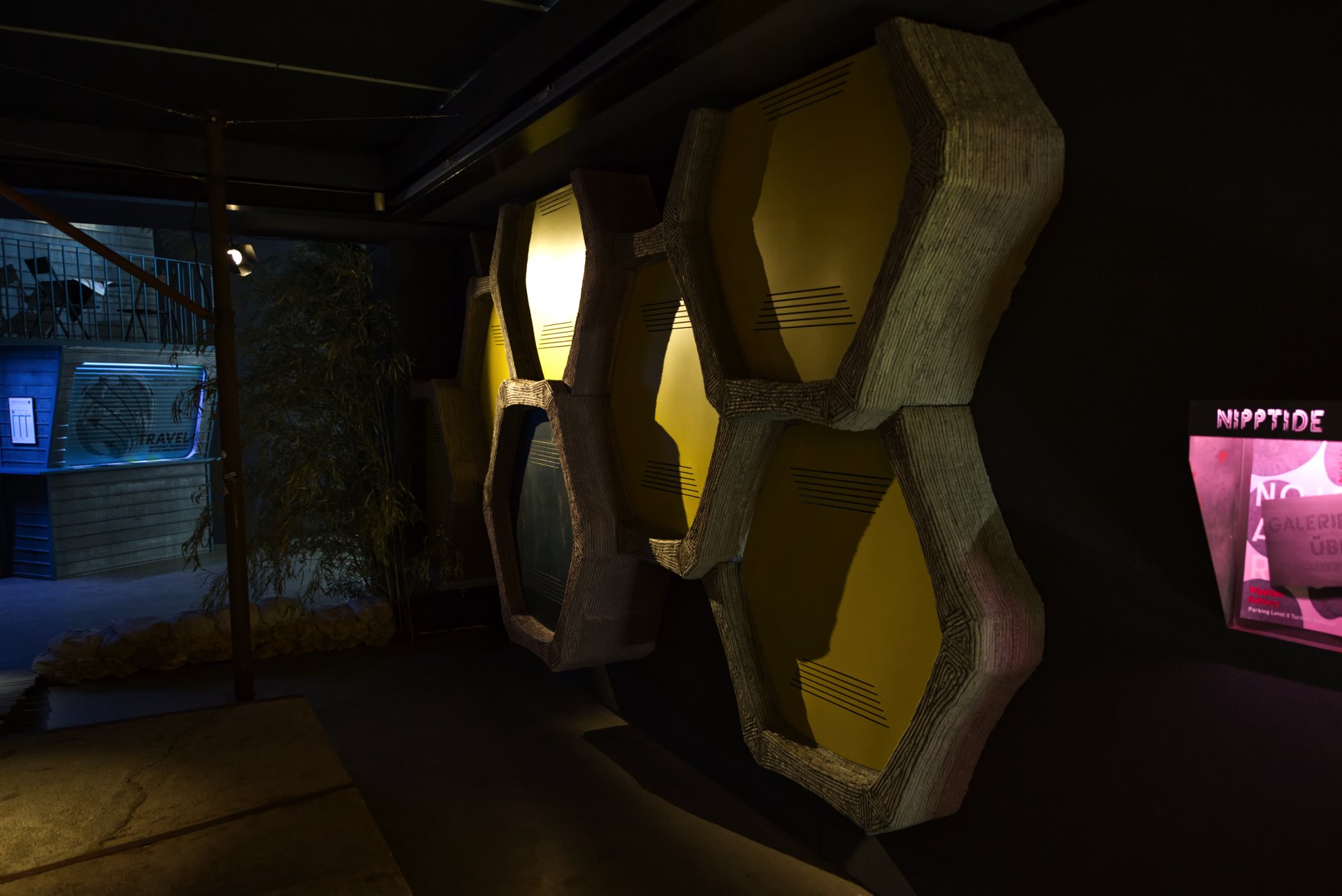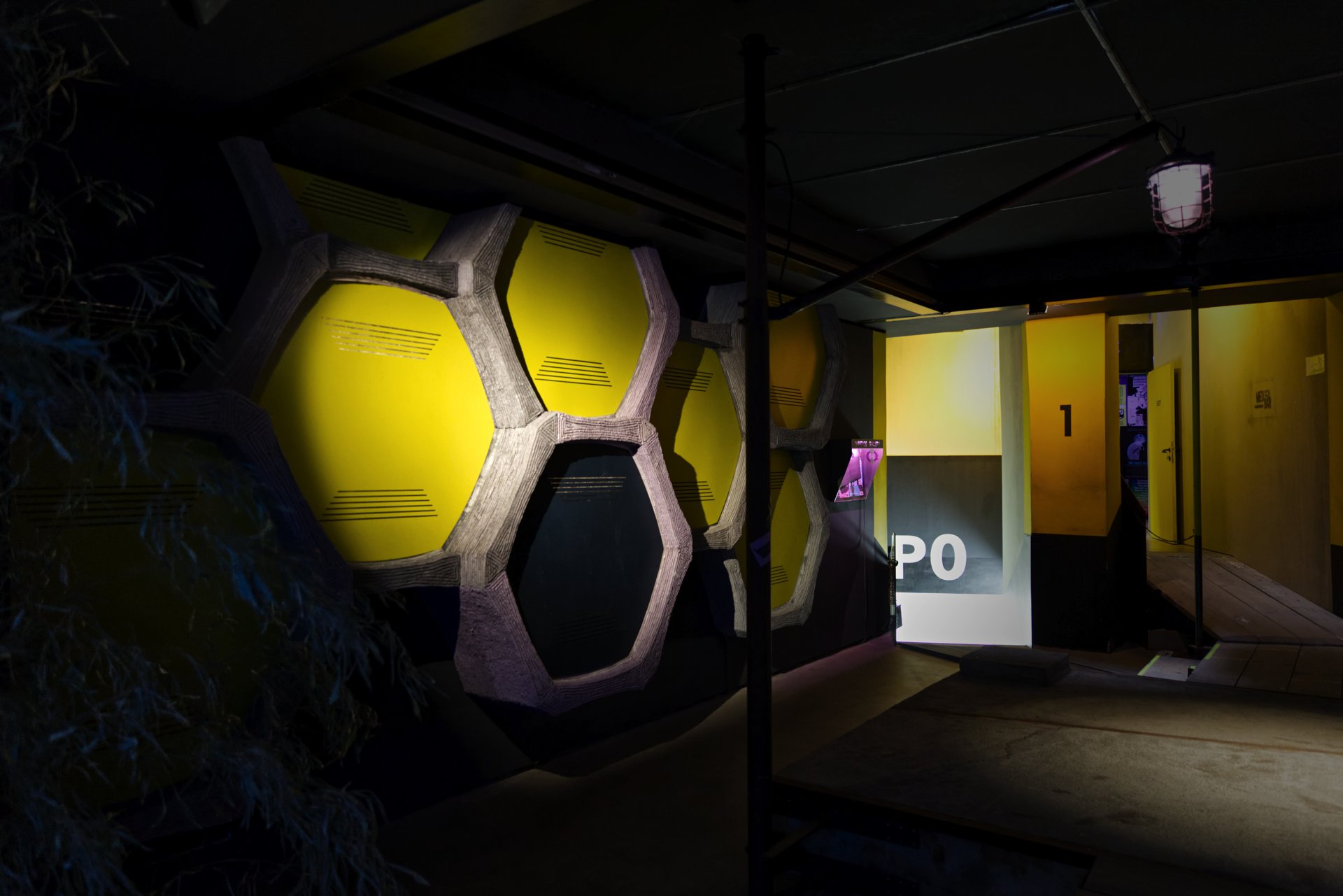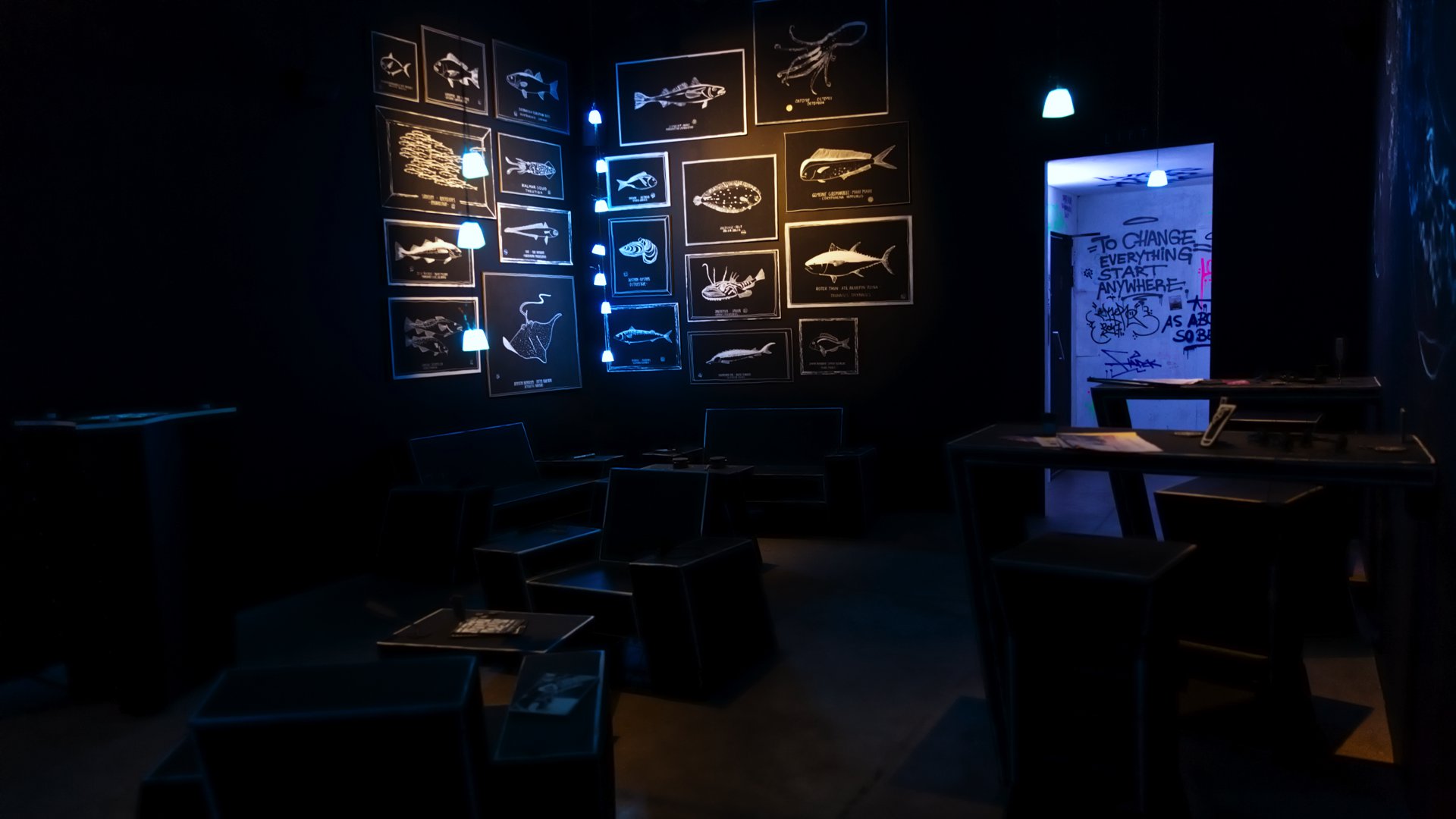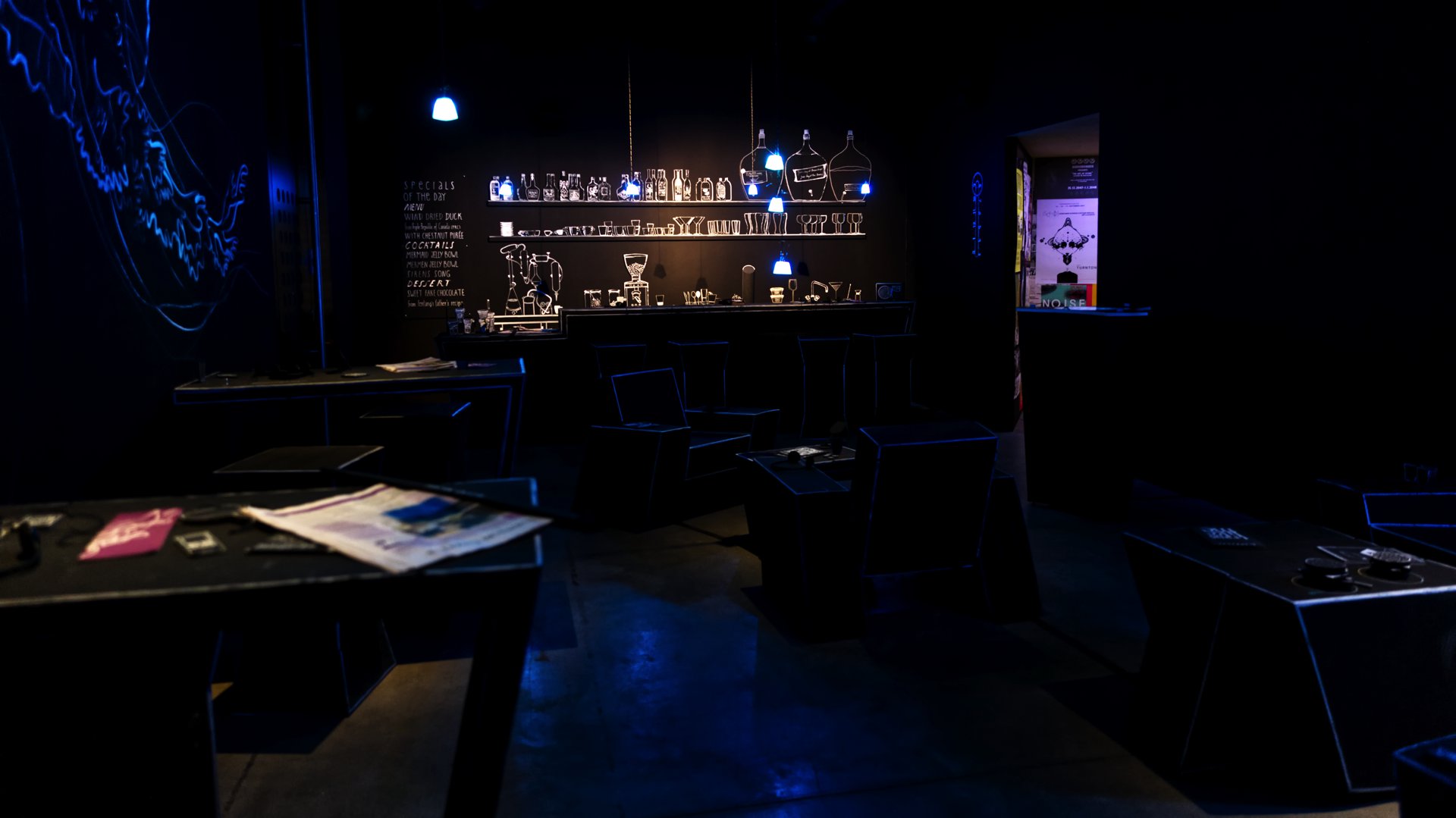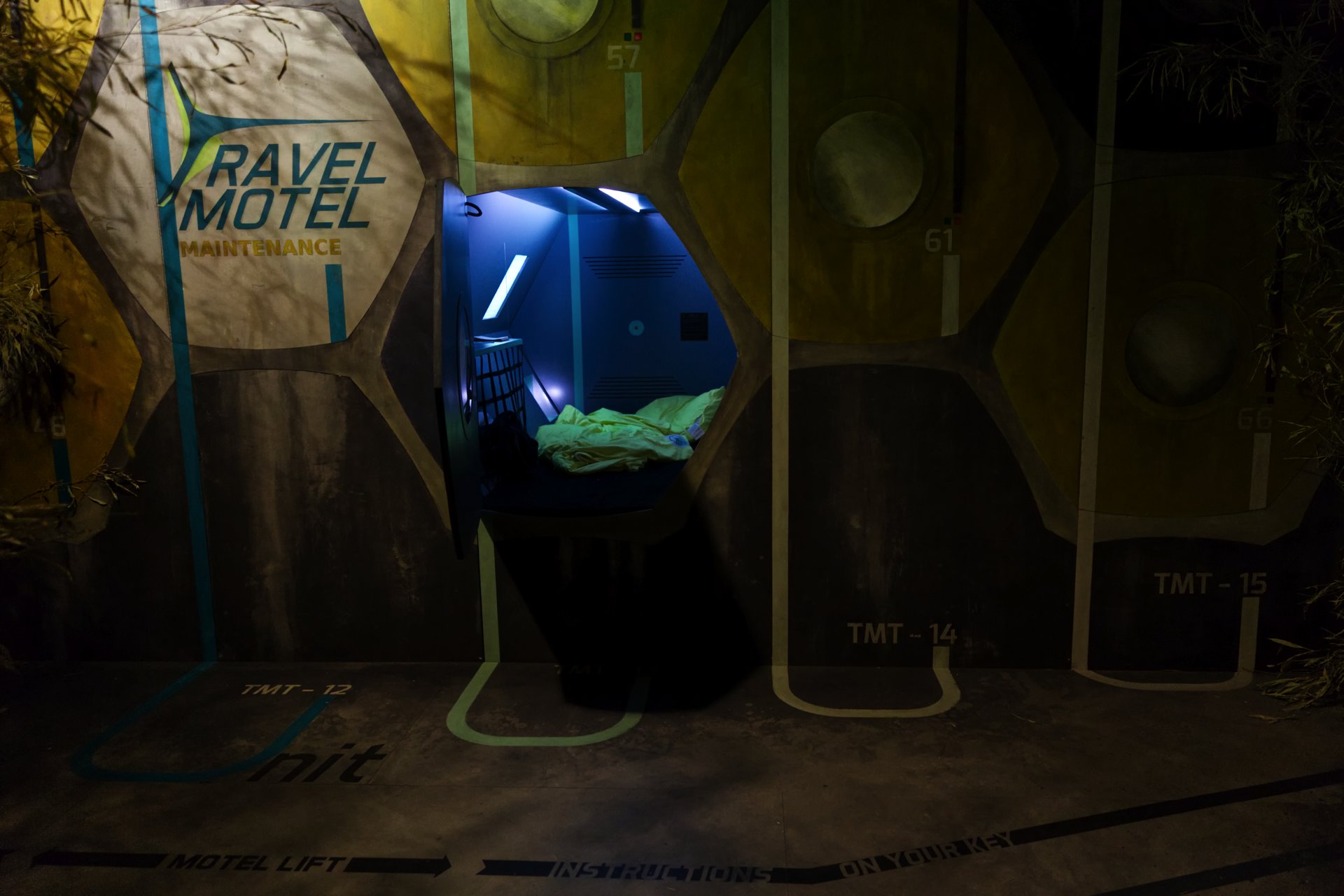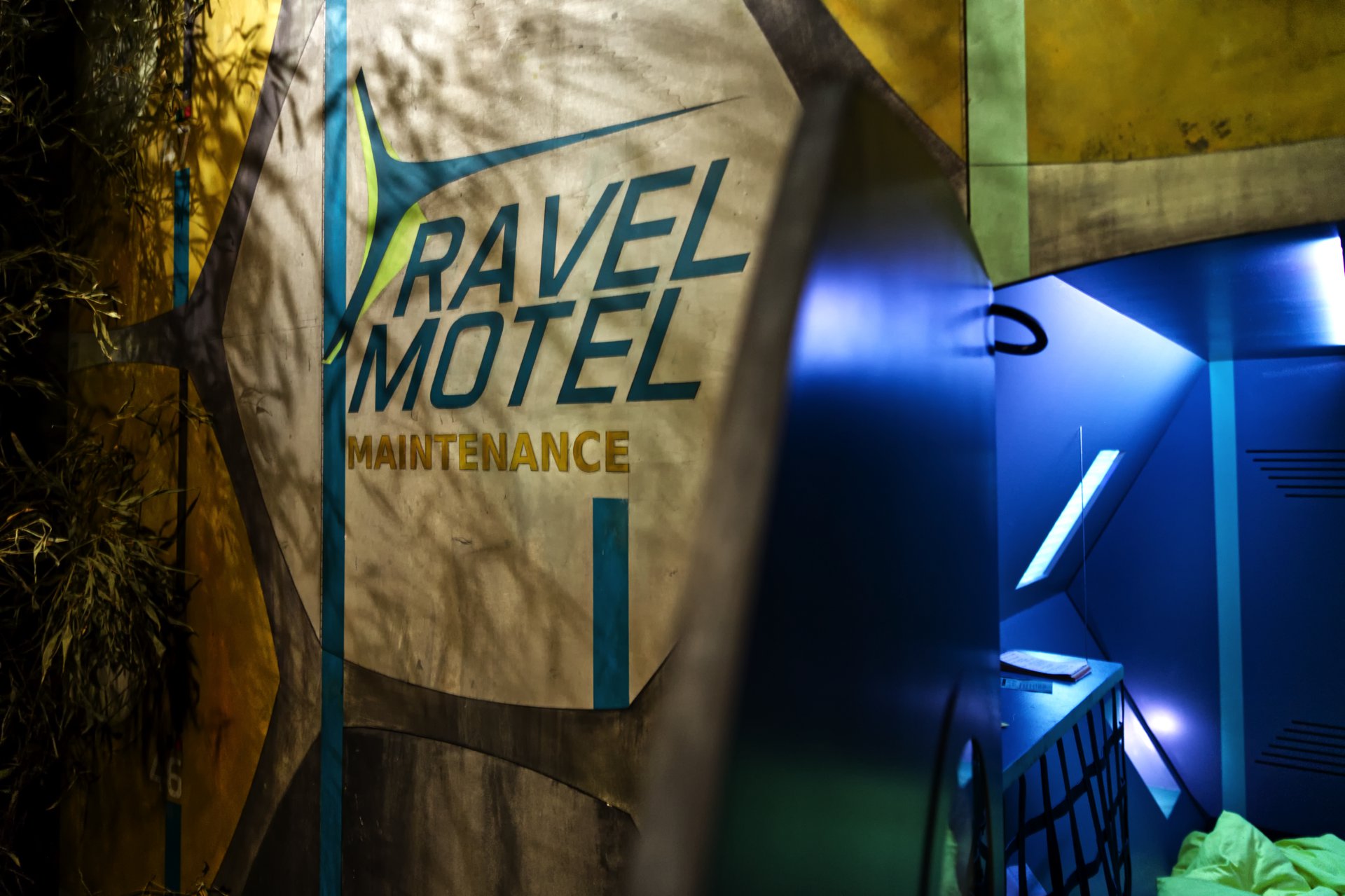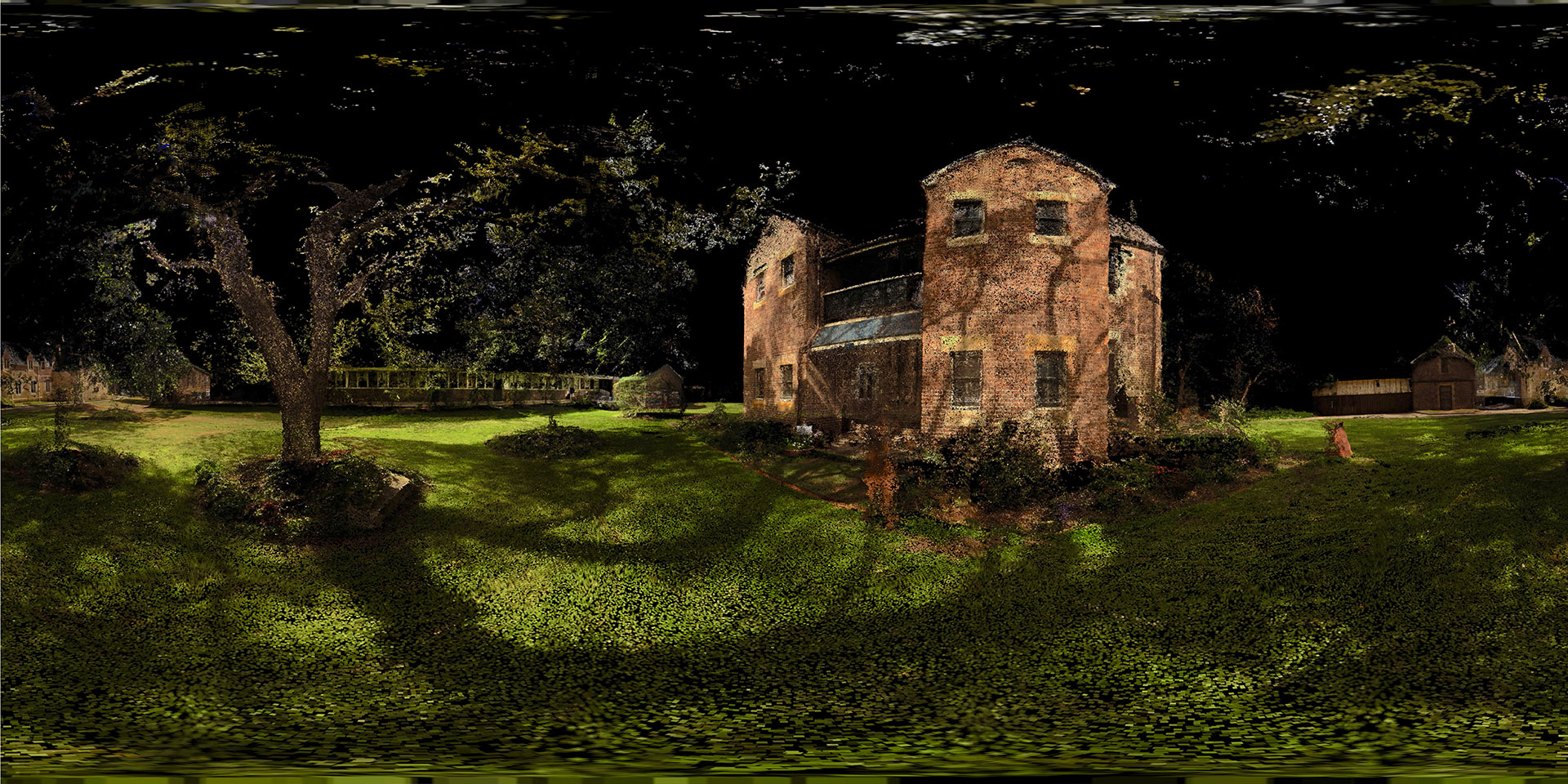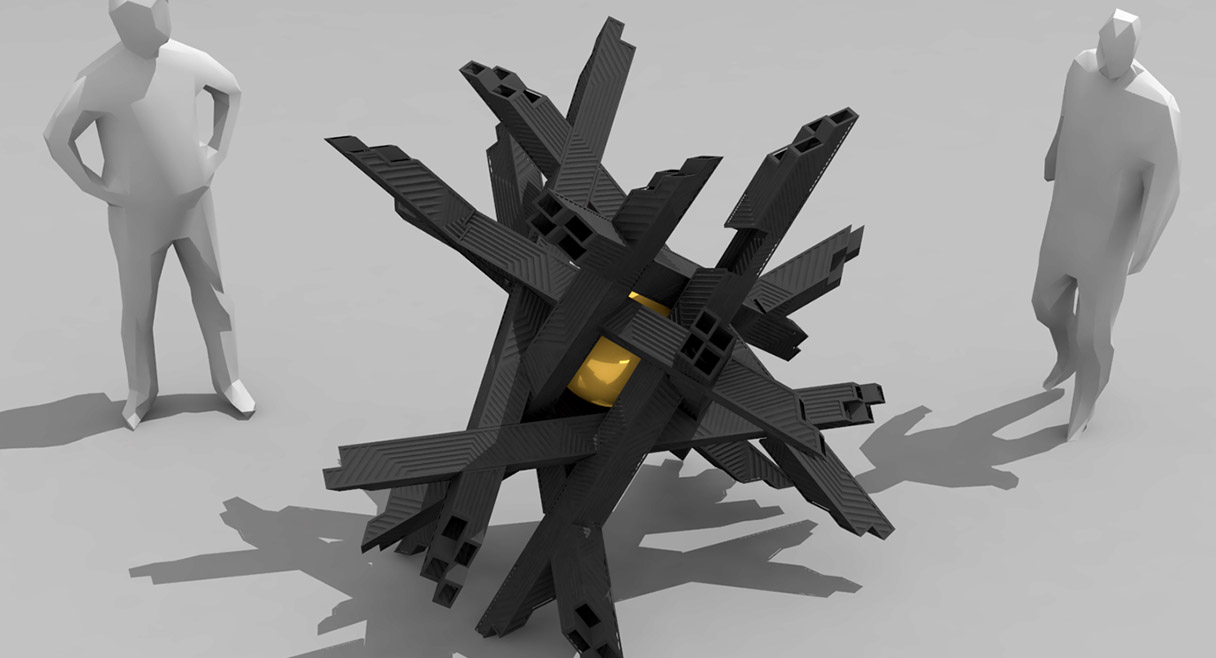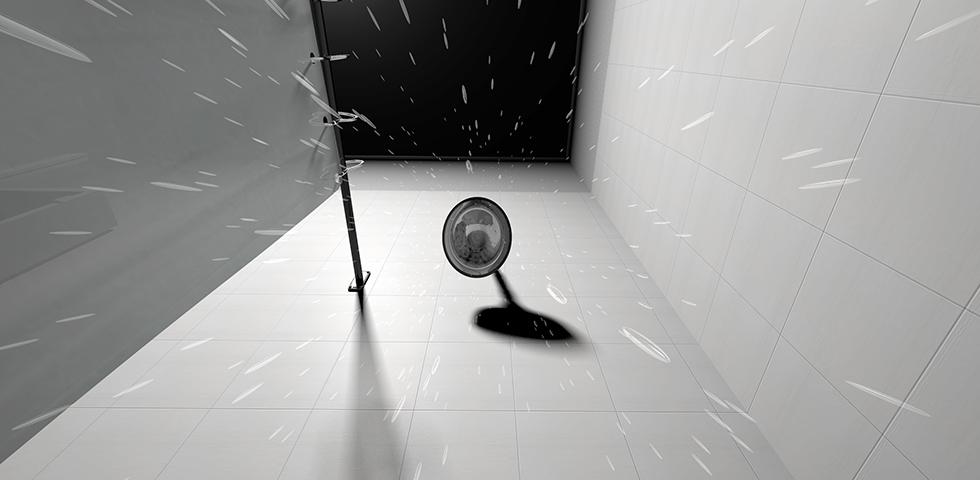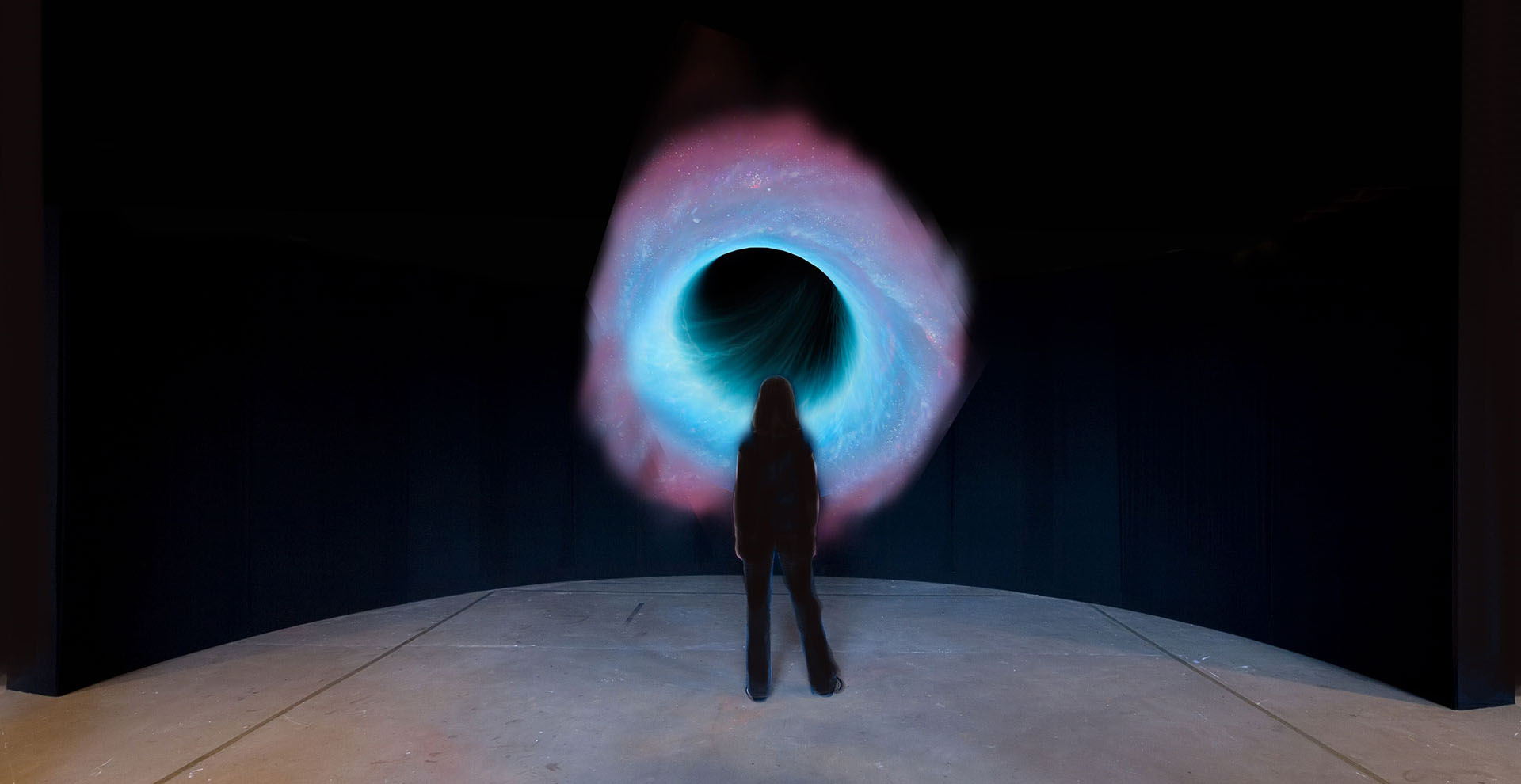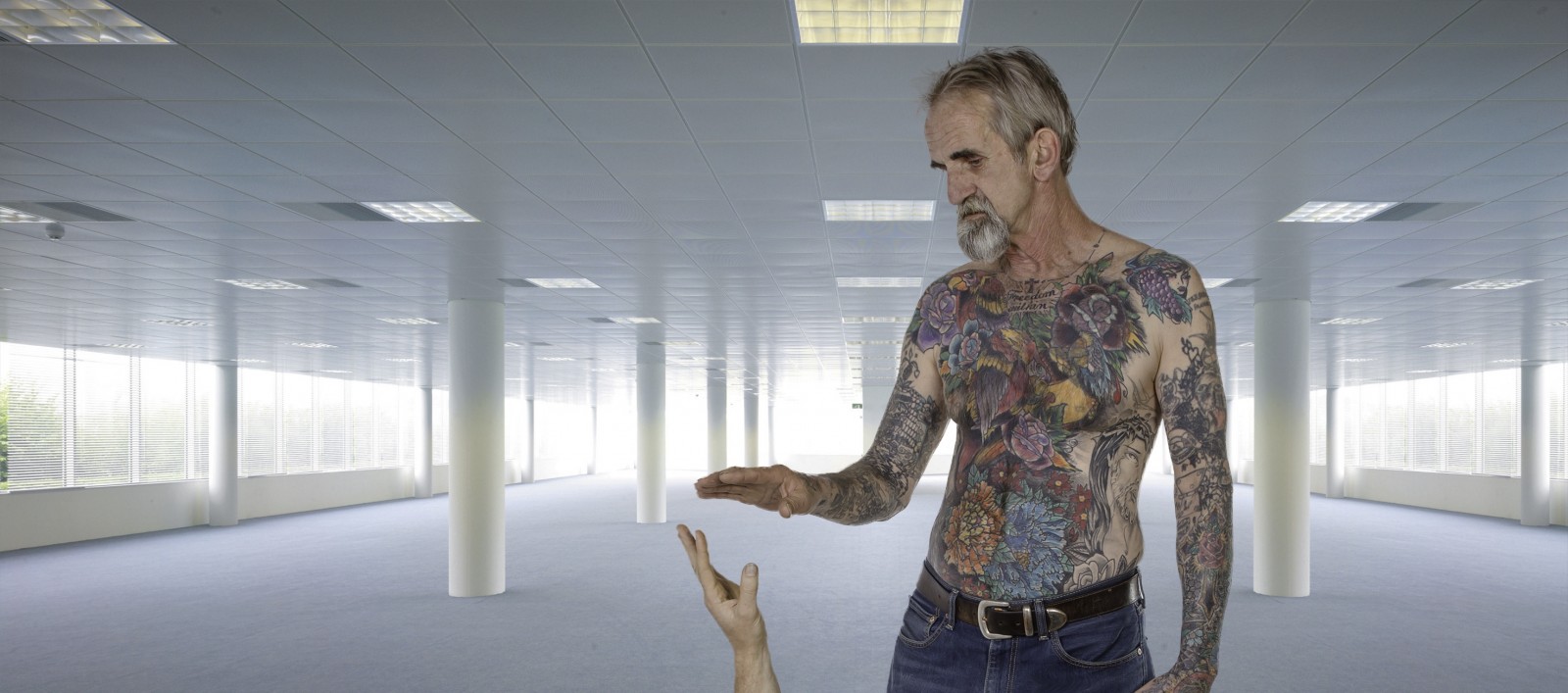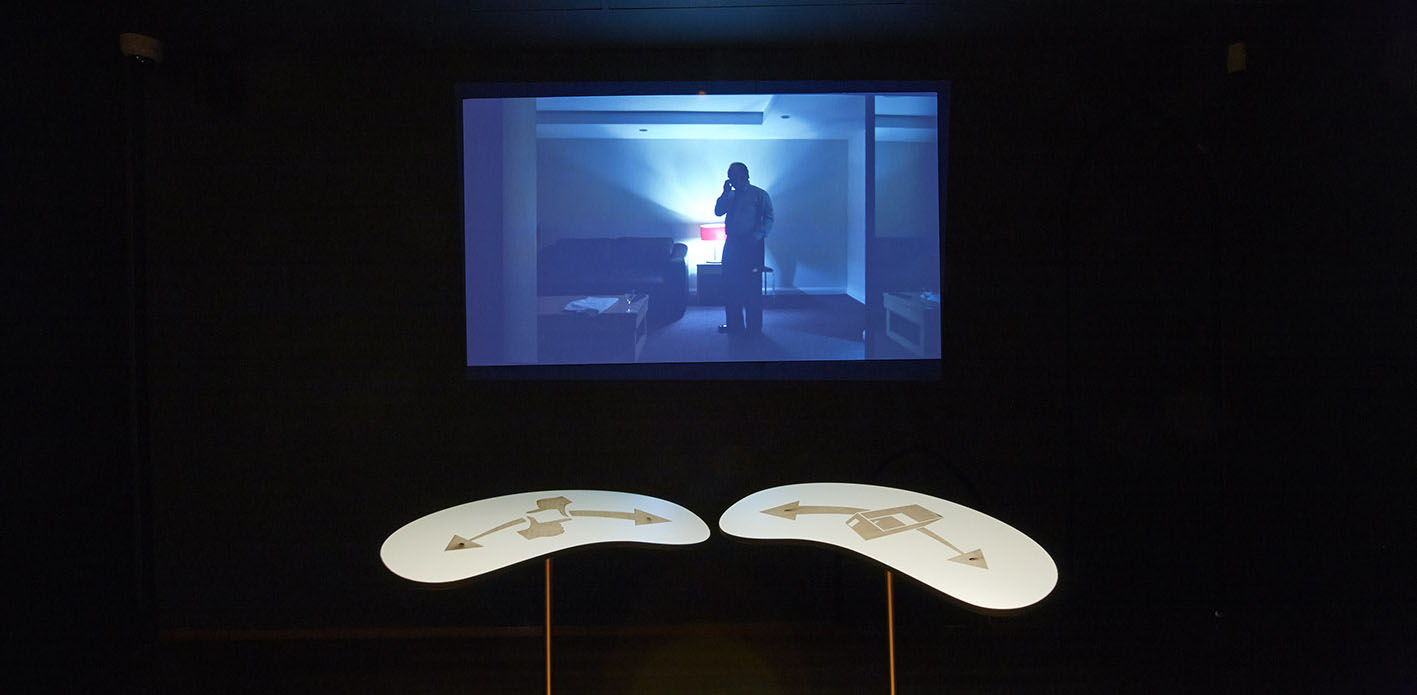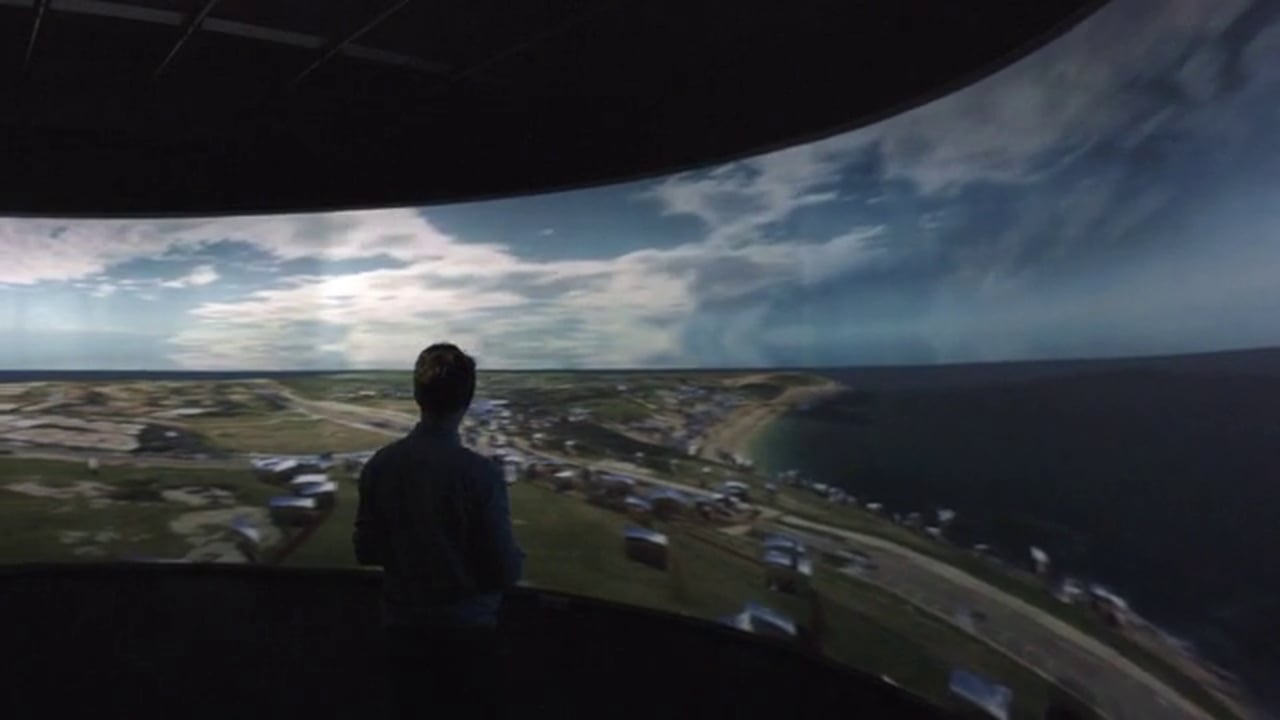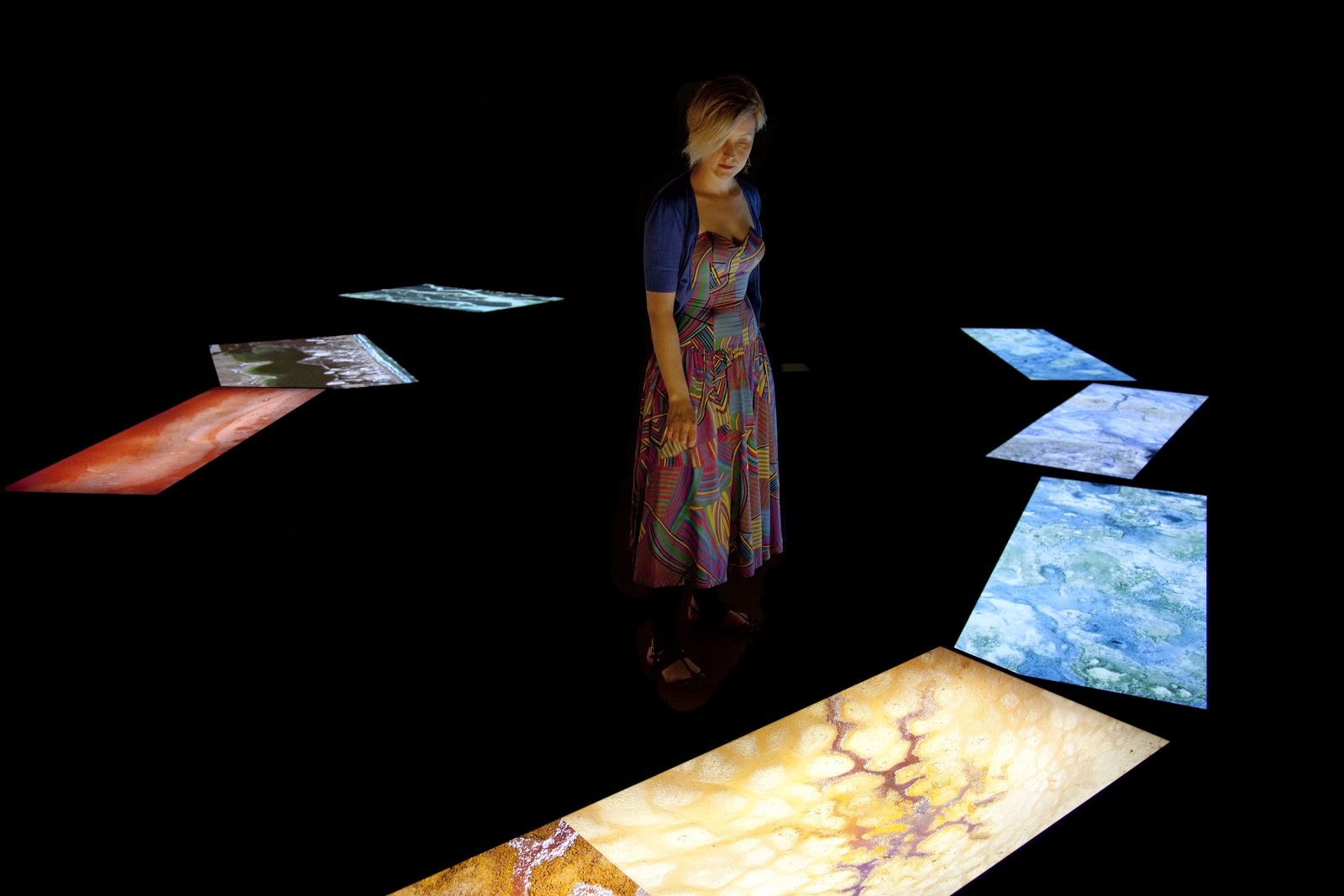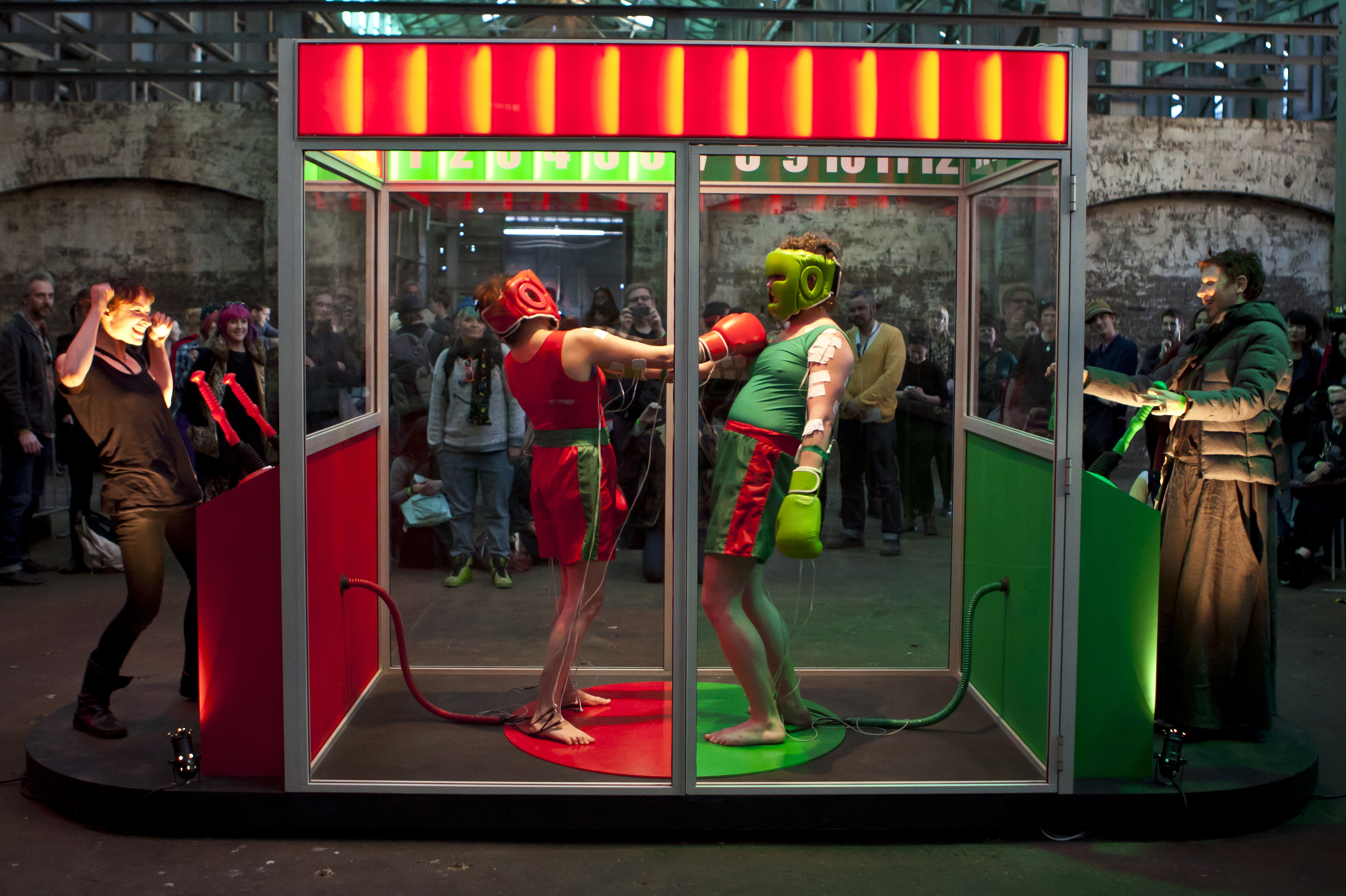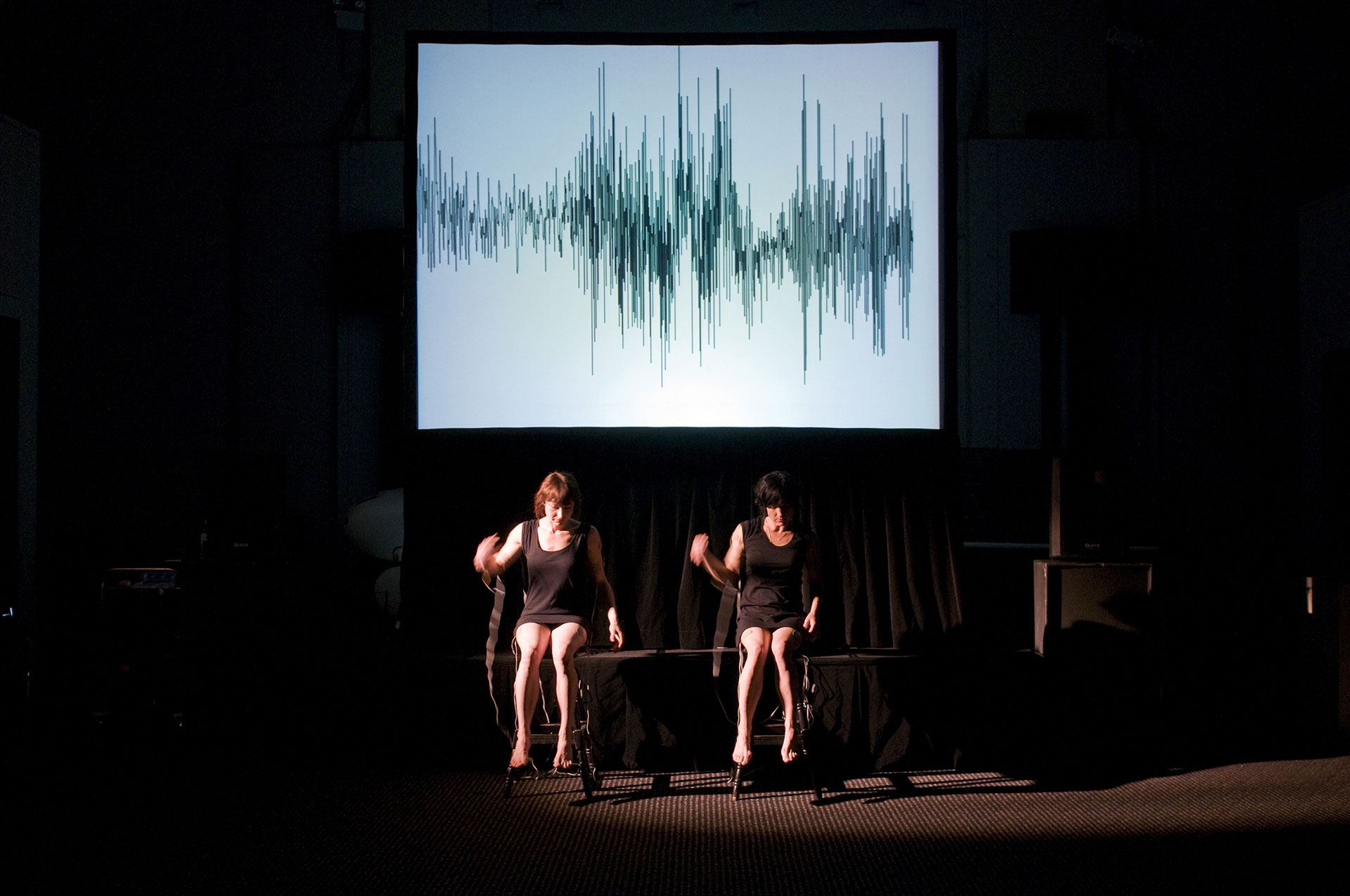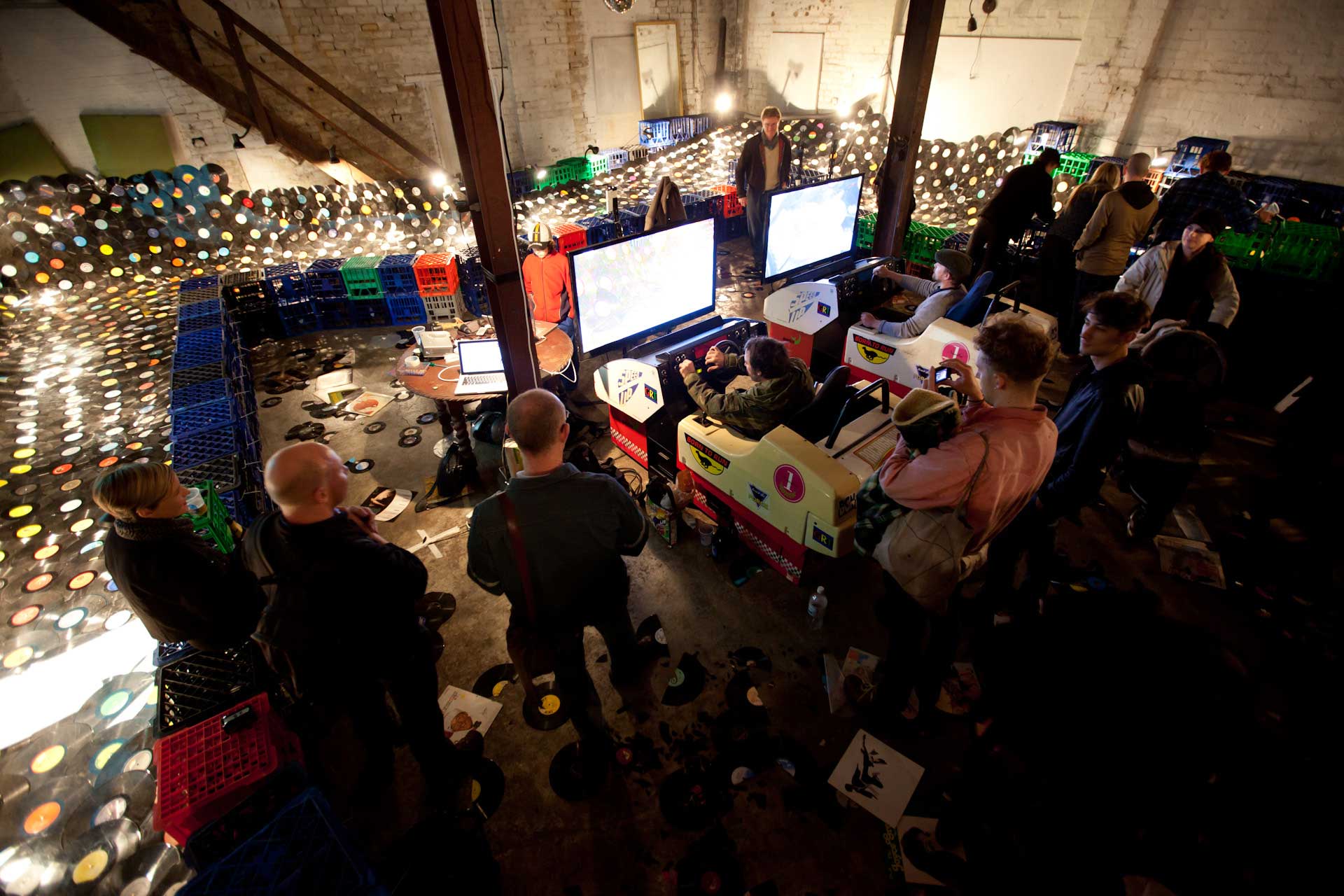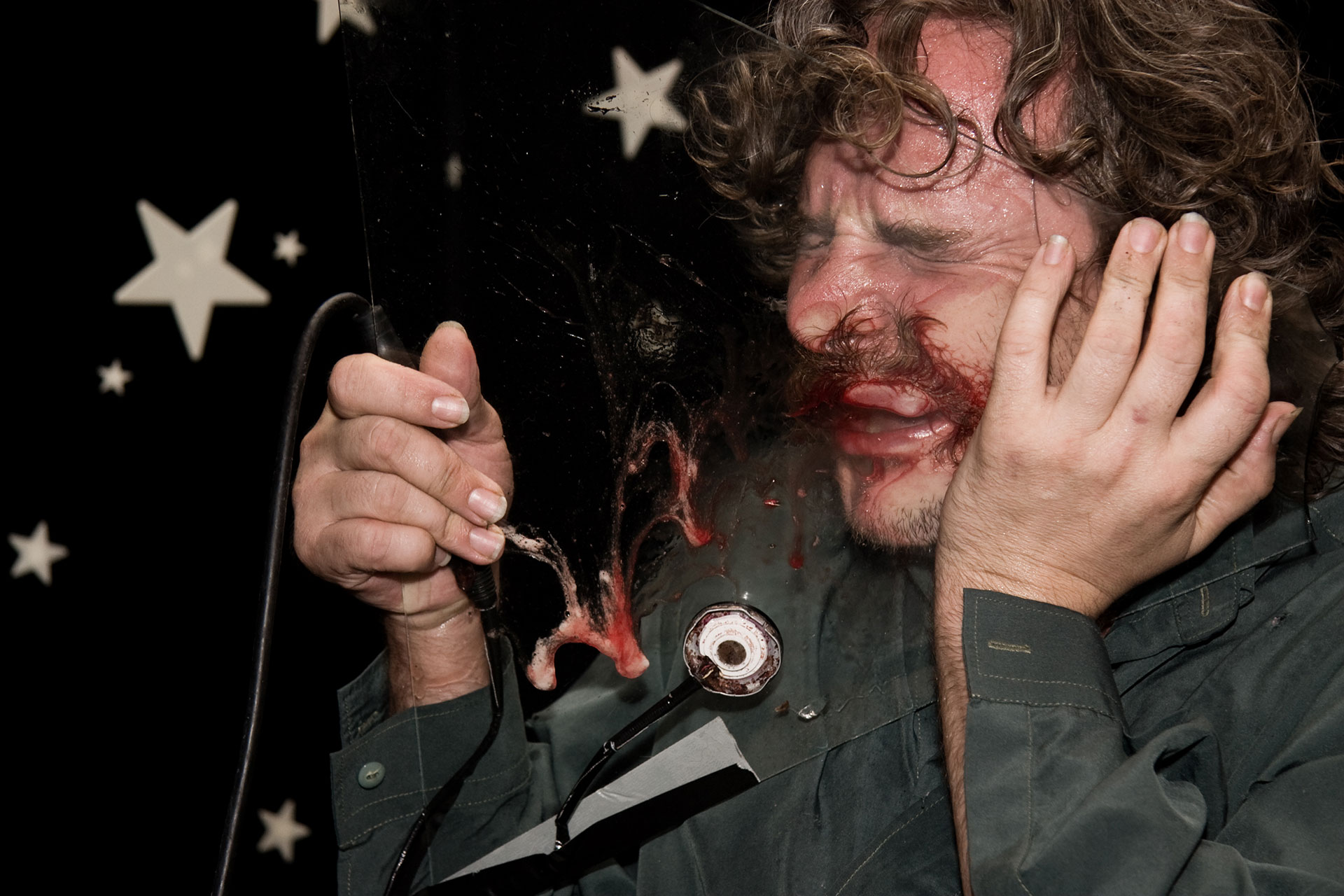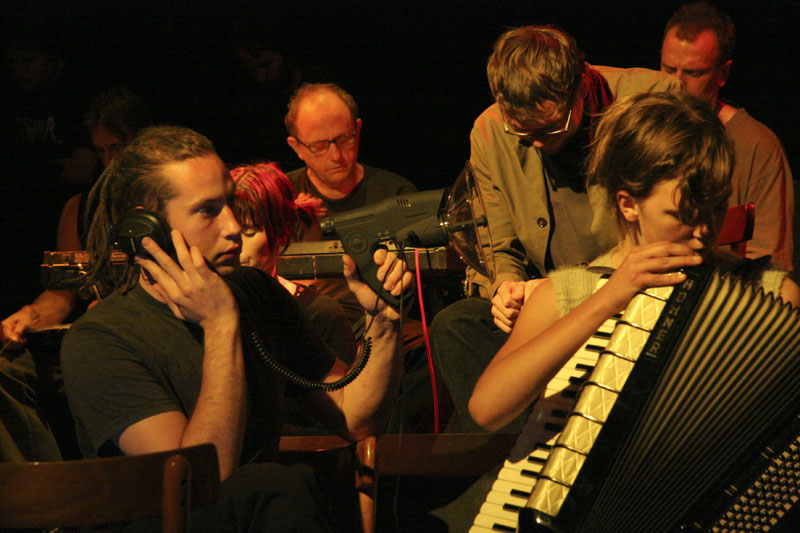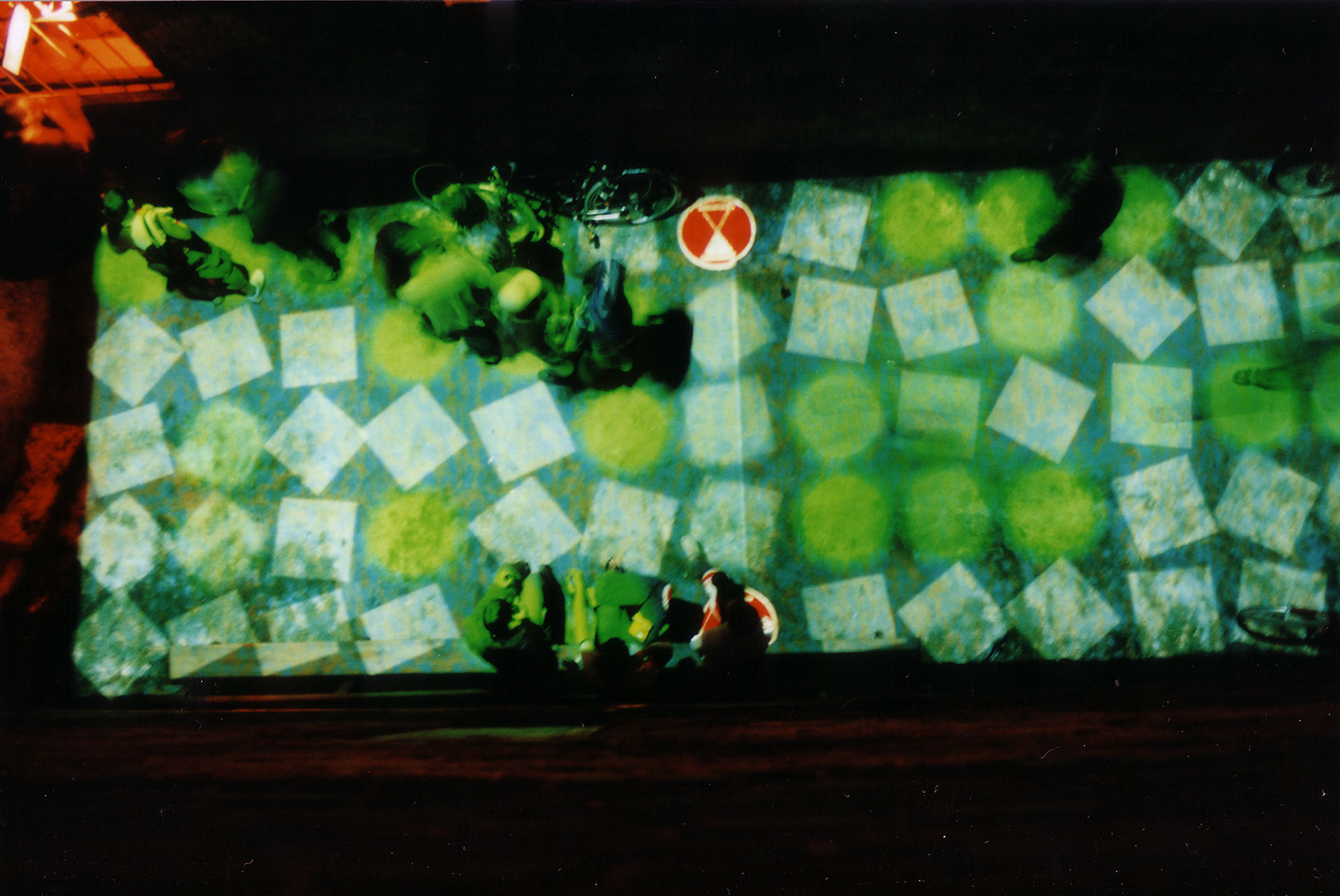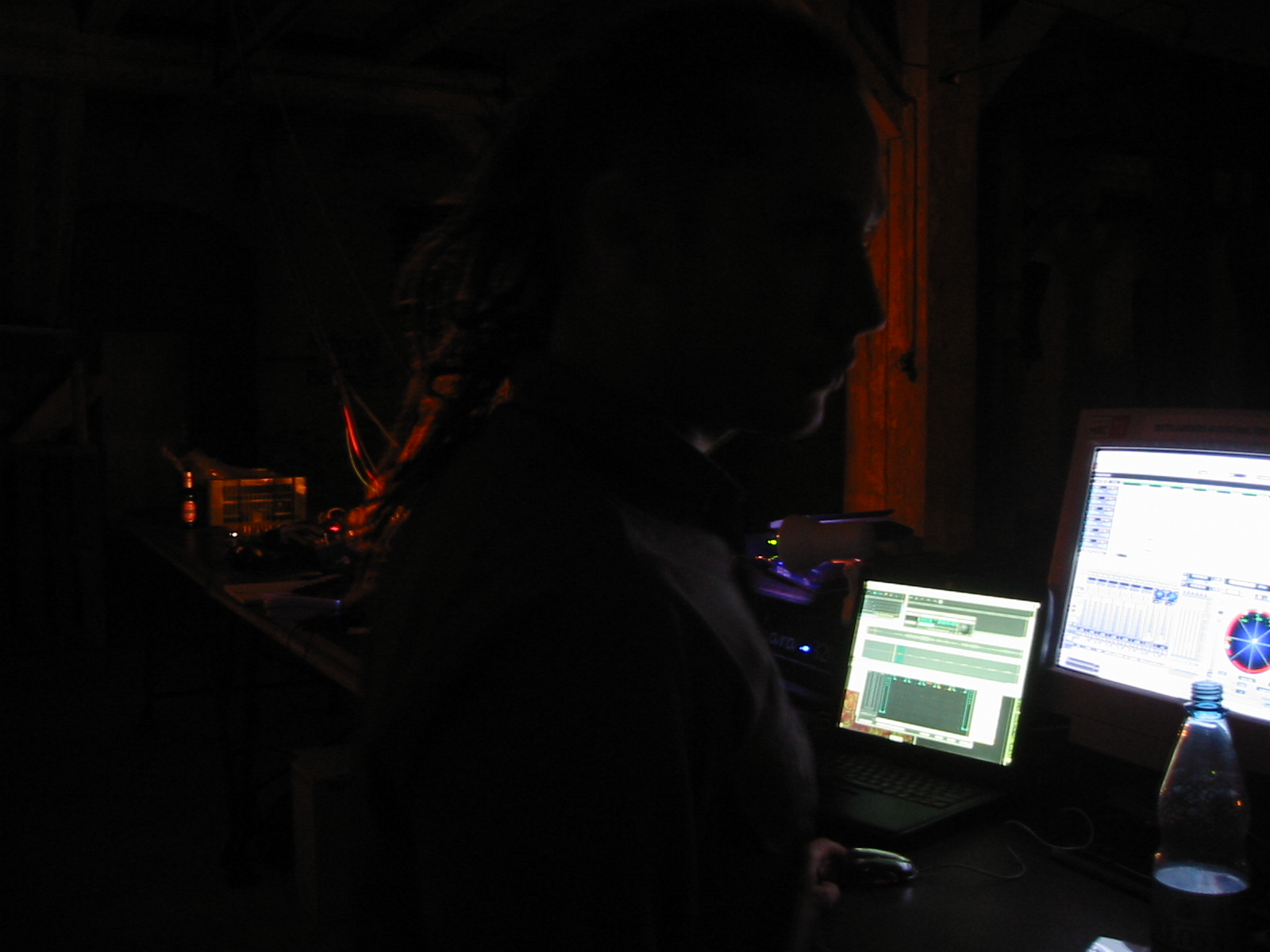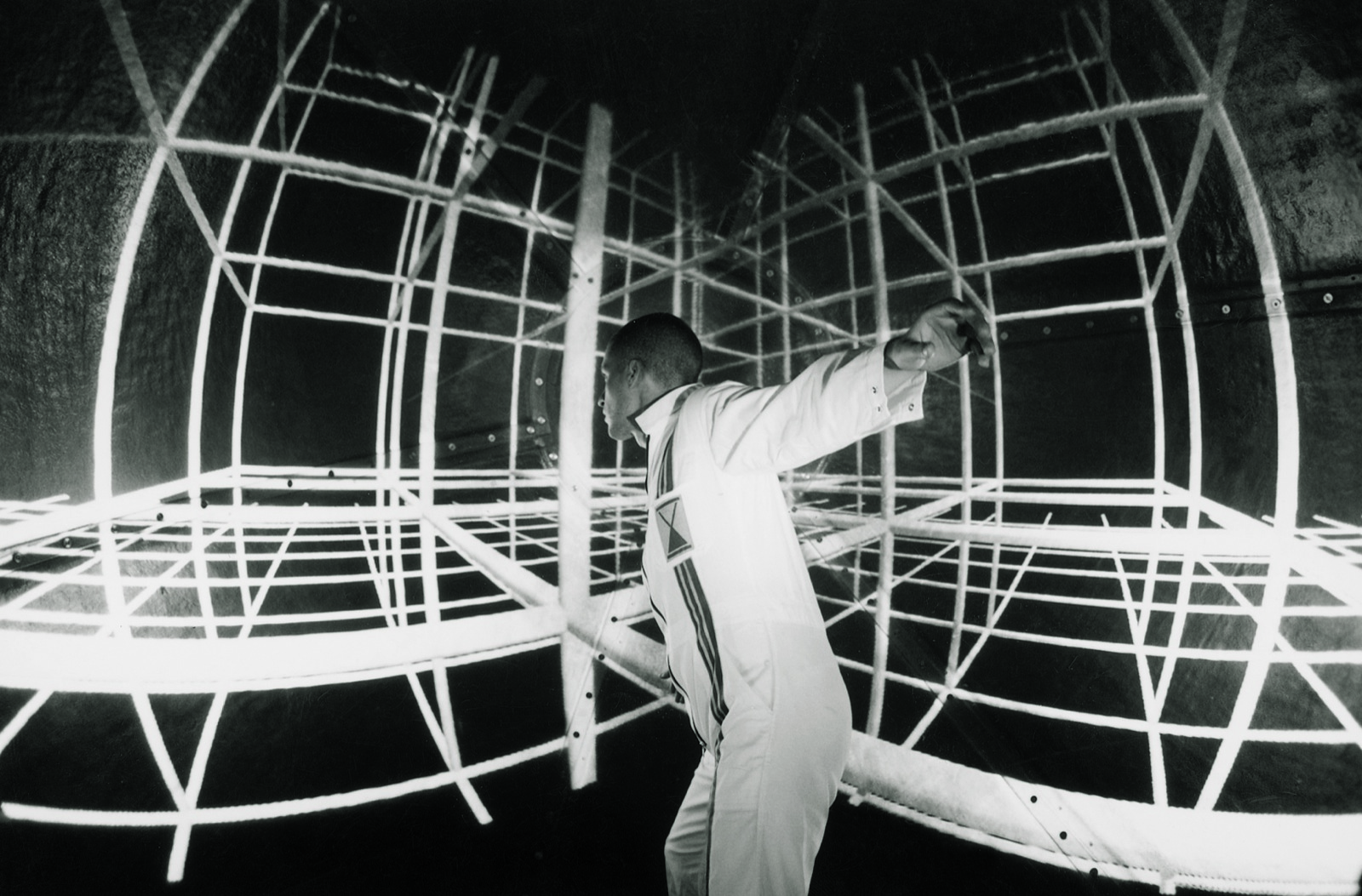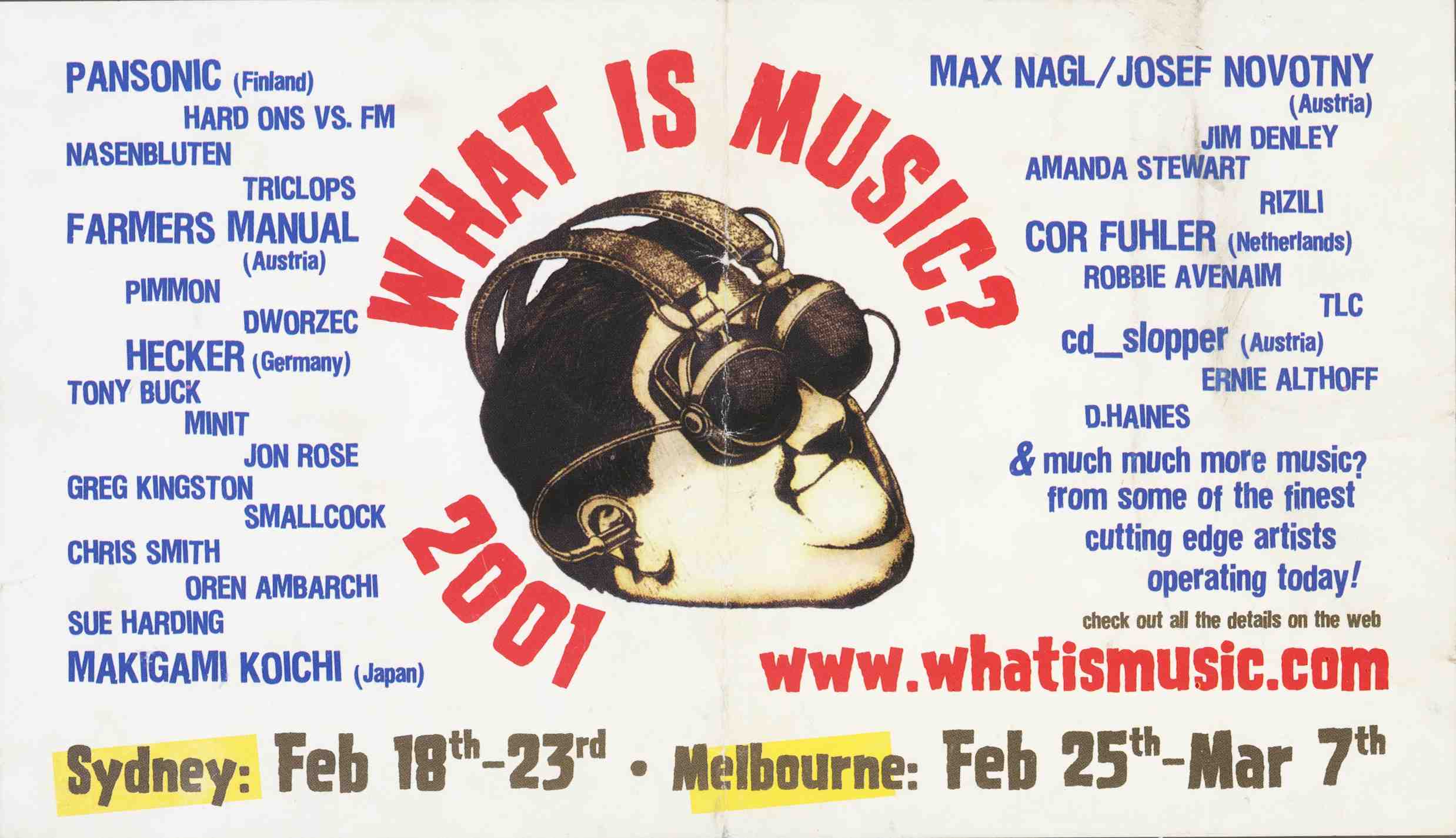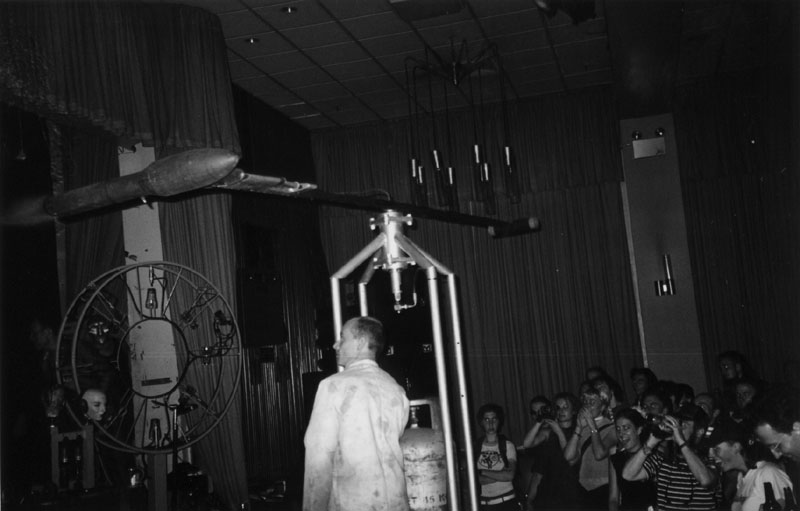Collaborations
2022
A Safer Place? Stories from the Emergency Department
Eight experts with lived experience guide us through a virtual reality experience of a hospital Emergency Department [ED]. They describe the scenarios of mental distress that led to their admissions, along with their experiences of waiting rooms, ED beds, and hospital procedures—and their insights into what can be done to address the shortcomings of emergency care.
This creative project builds on underpinning research, led by Renata Kokanović and her team, working with 17 people accessing the ED for mental health care. The aim of the initial project was to enable staff to understand ED processes from the perspective of those with lived experience. The full stories can be accessed via the Health Talk Australia website: https://www.healthtalkaustralia.org/mental-health-care-in-the-emergency-department/overview/
- Script editors: Gail Kenning, Jill Bennett, Volker Kuchelmeister
- Immersive media design: Volker Kuchelmeister
- Sound design: Alex Davies
- Production/design team: Volker Kuchelmeister, Jill Bennett, Gail Kenning, Alex Davies, Melissa Neidorf
- Research team: Renata Kokanović, Nicholas Hill, Critical Mental health group, RMIT
- Natasha Swingler, Peter Rolfe, Richard Pilkington, Sue Walker and other anonymous participants
This work is additionally supported by R&I Capability Research Funding, RMIT University
Exhibitions:
2023: Siggraph Asia 2023 XR, Sydney Exhibition Center, Australia.
2022: Felt Experience and Empathy Lab (fEEl), RMIT University, Melbourne, Australia.
2019
Change was our only Chance
Change was our only Chance by artist collective Time’s Up creates a world in the year 2047. By inviting you to step into this world, they make it possible to experience a potential future. This version of the future tells of the paths that humanity took in the 2020s, what decisions were made on a political and economic level, how climate change defined and influenced our future. How can we face these developments today with positive impulses as a collective, rather than lose heart faced with the problems of this world and freeze with fear?
More exhibition photographs available <here>
Exhibitions:
2019: Vienna Biennale, AIL – Angewandte Innovation Lab – Franz-Josefs-Kai
Date: 02.09.2019 – 27.09.2019
2017
Parragirls Past, Present

Parragirls Past, Present is an immersive experience presenting former residents’ visions of Parramatta Girls Home today. This landmark narrative digital media project is the first of its kind to screen in UNSW EPICylinder, the world’s highest resolution 360 degree 3D cinema. As an encountner with living memory, this work offers rare insight into the impact and experience of institutional care in contemporary Australia.
Creative team
Parragirls: Writer/Narrators Bonney Djuric & Jenny McNally; Narrators Lynne Edmondson Paskovski, Gypsie Hayes & Denise Nicholas.
Art Director & Production Design: Volker Kuchelmeister.
Sound Design/Editor: Alex Davies
Writer/Editor: Lily Hibberd
Co-producers: Jill Bennett, Bonney Djuric, Lily Hibberd
Created with Parragirls and new media artists Lily Hibberd, Alex Davies and Volker Kuchelmeister.
Exhibitions:
2019: Today is not Tomorrow: PTSD Understories, Umbrella Studio, Townsville, Australia
2019: Art after Hours. The Big Anxiety virtual reality station., Art Gallery of NSW, Sydney, Australia
2019:Horizon Festival. Deconstructed breakfast, Festival Central, Maroochydore.
2018: 360 Vision, Create NSW, Carriageworks Sydney, Australia
2018: Co.Lab. Landcom and UrbanGrowth NSW, Sydney, Australia
2018: Beyond Festival, ZKM Centre for Art and Media Karlsruhe, Germany
2018: Adelaide Film Festival, Adelaide Australia
2018: Haifa International Film Festival, Haifa, Israel
2018: Melbourne International Film Festival (MIFF), Melbourne Australia
2018: International Symposium on Electronic Arts (ISEA), Durban South Africa
2018: IX Symposium on Immersive Experience, The Conquest Of Reality, SAT Society for Arts and Technology, Montreal, Canada.
2018: Revelation Perth International Film Festival, Perth Australia
2018: South By Southwest Festival (SXSW), Austin USA
2018: Australian Heritage Festival, Parramatta Girls Home, Sydney, Australia
2018: Sydney International Film Festival, Sydney Australia
2017: Check-in Lounge, Parramatta Riverside Theatre, Parramatta.
2017: International Initiative for Mental Health Leadership & International Conference, Hilton Sydney, Australia
2017 Growing Up Digital, invited by NSW Mental Health Commissioner, Town Hall Sydney, Australia
2017: The Big Anxiety Festival, UNSW EPICenter (Expanded Perception and Visualisation Interaction Centre), Sydney Australia.
This project has been assisted by the Australian government through the Department of Communication and the Arts’ Catalyst—Australian Arts and Culture Fund.
Parramatta Female Factory Precinct Memory Project is supported by the NSW Government through Create NSW and is assisted by the Australian Government through the Australia Council, its arts funding and advisory body.
Parramatta Girls Home Audio Walk
Catch The Tiger
Designed to test how we react to changes in our environment, and to our own fluctuating anxiety levels, it is a multi-sensory physical game that you will experience with four other players. Played in the visually striking “Tiger Room”, the game is inspired by a traditional Chinese puzzle, combined with geometry informed by George Hart’s mathematical study of orderly tangles.
Creative team
Original concept: Iain (Max) Maxwell (Supermanoeuvre) and Mari Velonaki (Creative Robotics Lab, UNSW).
Puzzle design and manufacture: Iain (Max) Maxwell and Oliver Bennett (Supermanoeuvre).
Game and interface design: Mari Velonaki (Creative Robotics Lab, UNSW).
Sound design and composition: Alex Davies (Creative Robotics Lab, UNSW).
Hardware and software design and implementation: David Rye (Australian Centre for Field Robotics, University of Sydney), Michael Gratton (Creative Robotics Lab and Computer Science and Engineering, UNSW) and Andrew Haig.
Experiment design/psychology: Katsumi Watanabe (Waseda University).
Mental health design advisory: Katherine Boydell (Black Dog Institute) and Jill Bennett (National Institute of Experimental Art, UNSW).
Commissioned by: Jill Bennett (National Institute of Experimental Art, UNSW).
Hosted by: The National Facility for Human-Robot Interaction Research.
Exhibitions: 2017: The Big Anxiety Festival, UNSW National Facility for Human Robot Interaction, Sydney, Australia.
Only the Air, Only Each Other
Director: Greg Ferris, Sound Design, Alex Davies
Running Time: 6:03
Only at the Air, Only at Each Other is an experimental virtual-reality exploration of in-between spaces, in this case the Bates Motel from Psycho – motels being the spaces between starting points and destinations – and the space between life and death …
Exhibitions:
2017 Sydney Film Festival, Sydney Australia.
2017 Revelation Film Festival, Perth, Australia.
Black Hole Horizon
Collaboration with Artist Lily Hibberd. Spatial sound design and custom programming Alex Davies.
Black Hole Horizon is a sound installation inspired by Extreme Light’s artificial black hole experiment. Descending into the basement of Summerhall, you enter an acoustic tunnel where data collected in the lab at Heriot-Watt is transformed into 3D sound. The piece was presented as part of a larger Data Horizons exhibit by Lily Hibberd.
Exhibitions: 2017 Edinburgh International Science Festival, Summerhall, Edinburgh
2016
And the Earth Sighed
Artists Josephine Starrs and Leon Cmielewsky. Spatial sound design and composition Alex Davies.
‘In an immersive audiovisual installation that re-imagines the relationship between nature and culture, Sydney based artists Josephine Starrs and Leon Cmielewski configure the land itself as active, not neutral, and able to speak about our human impacts upon it. Using imagery captured by drones, detailed aerial views of Australian landscapes and waterways are dynamically manipulated in ways that reveal their underlying fragility; while Alex Davies’ surround-soundscape invites contemplation of the impact of climate change on natural ecologies.’
Video documentation of the installation exhibited at Arts House Melbourne in 2016 is available here https://vimeo.com/175772743
The Chat
Created by ex-parole officer and performance maker James Brennan and the acclaimed David Woods of the UK’s Ridiculusmus. How and when should people be forgiven for their crimes? Who gets to decide? What happens if they get it wrong? The Chat brings ex- offenders, parole officers, criminologists and academics together with some of Australia’s wildest performance makers to come to grips with these questions.
The structured one-on-one parole interview will be taken, subverted, transformed and reborn as an innovative performance score that compels audiences to consider the complex nature of what they are seeing – interrogation, anthropological study, confessional. How are the lives of those convicted of crime assessed, recorded and in what ways does this determine their systemic value?
Creative Team
J R Brennan – conceived by / performer /sound & set design / lead artist
David Woods – co-creator / performer / script wrangler
Ashley Dyer – workshop facilitator / performer / collaborator
Alex Davies – systems designer / control box engineer / custom software development.
Nick Maltzahn – performer
John Tjepkema – performer
Arthur Bolkas – performer
Tye Luke – performer
Nick Apostilidis – performer
A twenty minute video about The Chat filmed during the 2016 season at Arts House, Melbourne is available here: https://vimeo.com/210186946
Every Time I Leave the Room
Artist: Greg Ferris, Sensor integration and custom software development for non linear playback, Alex Davies
Every Time I Leave the Room is a scalable, immersive installation that uses gestural movements to move in and around a cinematic spatiality inspired by Deleuze’s concepts of the relative and absolute ‘out-of-field’. Words and actions are repeated and echoed across a number of scenarios situated in a series of hotel rooms. In one room an aging stuntman contemplates his own aging and mortality. In adjacent rooms, a businessman arrives with a mysterious briefcase, young lovers meet, a wife waits for her lover… but in a number of these rooms there’s something… missing. Every Time re-imagines cinema and theatrical temporality and spatiality, in both comedic and at times, poignant ways.
Project documentation from Mosman Art Gallery, Sydney Australia is available here: https://vimeo.com/114762221
2014
Amnesia Atlas
Creative Team: Volker Kuchelmeister, Jill Bennett, Dennis Del Favero
Software: Rob Lawther with Alex Ong, Steven Antolovich, Jack Davis.
Sound Design: Alex Davies; 3D Lighting Design: John Bailey; Consultants: John Sutton, Amanda Barnier.
Components of the project were produced with an interdisciplinary group of UNSW students.
Co-Producers: National Institute for Experimental Arts; iCinema Research Centre, UNSW Australia
Narrative Scenarios: Steven Antolovich, Caroline Crane, Jack Davis, Hannah Greethead, Catherine Martin, Zorica Purlija, Lea Simpson, Delilah Simpson, Krystal Sweetman, Christine Wiltshier.
Amnesia Atlas is a prototype 3D browser for viewing photographs taken by SenseCam (a wearable automatic camera, now marketed as Autographer). Using geo-tagging data the browser relocates the photos into a 3D spatial setting, representing the sites at which they were taken. The various SenseCam sequences used in this prototype trace separate pathways, sometimes intertwining, across the headland and beach at La Perouse, Botany Bay (Sydney). Users may retrace these journeys, using a map on a tablet computer as a navigational interface. Unlike a conventional 2D browser, Amnesia Atlas adds a spatial dimension, recalling the Ancient memory theatres or spatial maps constructed to aid memory retrieval. Those imagined spaces facilitated the recall of large numbers of items, which could be retrieved from memory by ‘walking’ through the locations within a memory theatre. Amnesia Atlas enables a similar sense of spatial orientation and navigation—of walking through places.
Video documentation of the project is available here: https://vimeo.com/112019165
2013
Incompatible Elements
Artists Josephine Starrs and Leon Cmielewsky. Spatial sound design and composition Alex Davies.
In this media art installation, poetic texts are embedded into animated satellite images of terrains and waterways in crisis. The intention is to configure the land as active and to imagine it being able to speak and make comment about human impacts upon it.
Detailed information about the project is available here and video documentation is available here https://vimeo.com/18688743
Game On
Using electric muscle stimulation to control real people as game characters, Game On explores violence in modern entertainment and the ethical challenges faced by society as technology advances to a point where the level of realism in ‘games’ becomes indistinguishable from reality
Creative Team:
Concept and production: Michaela Davies
Electronics & hardware: Leigh Russell
Max/MSP programming: Alex Davies
Set fabrication: Ed Horne
Costume making & design: Michaela Davies
Sound Design: Michaela Davies
Custom EMS device: Richard Allen
Joystick fabrication: Damian Martin, Odd Studio
Installation and damage control: Reuben Alexander
Boxers: Lea Spratt-Simpson, Mark Simpson, Tenley Gillmore, Claire Conroy, Sam Pettigrew, Matte Rochford, Kerri Ambler and Louise Maloney.
Detailed project information is available here and video documentation of the work installed at Cockatoo Island, Sydney Australia here: https://vimeo.com/113065440
2010
Subsoma
Subsoma explores human interaction with the environment in a performance where movement in the human body is controlled by seismic activity. Subsoma speaks to human reliance on data, its transmission, interpretation and impacts, highlighting both the utility of information and the lack of agency we have in respect of global systems.
Creative Team:
Concept and production: Michaela Davies
Max/MSP programming: Alex Davies
Seismic Data translation: Stock
Custom EMS device: Richard Allen
Performer: Michaela Davies and Kerry Ambler
The Vinyl Rally
Classic first person video racing is simulated as remote control cars with styli attached, race across a track constructed from a mass of disused vinyl records. Transmitting sound (produced as the styli skim along the vinyl surface) and vision (from wireless spy cameras mounted to each car) to reengineered old school racing consoles with immersive 50” flat screens. Here players navigate the course from the vehicles point of view, not only controlling the cars movements, but also the parameters of the resulting sounds they create via a series of unique audio effects mounted onto the dashboard (by Last Gasp Laboratories) giving each car its own distinct aural flavour. These sounds are emitted from speakers built into the seats causing them to vibrate in correspondence with the movements on screen, producing a personally immersive experience aurally, visually and physically that can only be truly appreciated seated at the controls.
Artist: Lucas Abela, Custom hardware and software integration: Alex Davies, Electronics Audio Effects: Hirofumi Uchino
2005
Justice Yeldham and the Dynamic Ribbon Device
Music performance with artist Lucas Abela at Lanfranchis Memorial Discotheque on the 03/08/2005, Live processing Alex Davies. Video extract from the show is available here
The Splinter Orchestra
Parasitic live sampling and processing.
The Splinter Orchestra is a large-scale electro-acoustic improvising ensemble based in Sydney, Australia. Formed in 2002, the group currently comprises of 30+ members. It is one of the few groups of its kind in Australia and internationally, bringing together musicians from various musical backgrounds to combine and collaborate on equal terms. Made up of individuals from the improvised music, jazz and classical scenes, electronic musicians, sound artists and those who are involved in environmental sound and field recording, the Splinter Orchestra creates a stark minimalism despite their large number – without any leaders or conductors.
2004
The Shadowers
Artist: Monica Tichacek, Sound Design: Alex Davies, Video Post: Sam Smith
The Shadowers is a 3 channel installation that portrays a chain of abstract and surreal interactions between a trio of characters, as games and exchanges are played out within the realm of video. The physical and emotional create a coded language describing pain, desire and the fragility of existence. The action is set in a lush, outdoor environment and dark, flip-side spaces, feeling claustrophobic, dreamlike and minimal. Within these realms flesh and the ‘natural’ oddly merge to create a new ‘prosthesis’, frighteningly beautiful as control and the vulnerability of natural order spiral into one another. Psychology dangerously manifests itself physically, revealing the abject and unconscious violence of the mind.
“Insights into the violent tendencies of mind and body are invited in this kaleidoscopic work with its wordless narrative. Tension is heightened by sound and the pitches, chords and tones produced by slack and taut strings…again the metaphor of entrapment. The action escalates and becomes hyperbolic, allowing no space for the tension to be broken. The woman lets out occasional screams as if being raped in the most horrible of circumstances…until only a rasping breath is audible. The sound gets inside you and reverberates through your organs, like bats, not butterflies, rising to the throat, making you feel sick.”
http://www.realtimearts.net/article/72/8305
Work, Rest, Play, (Escape)
Imperial Slacks collective formed in 2000 in Surry Hills, Sydney in response to a need to continue the activities of the artist run space Herringbone Gallery. The collective is made up of resident artists and friends from the studios that surrounded the exhibition space. The Imperial Slacks collective ran the gallery until late-2002, supporting curated exhibitions, sound events and performance projects from local and international artists. During that time, the group exhibited annually, producing 18 is enough, Imperial Alliance, Positive Overkill and Period (an exchange project with Blaugrau artist run space). The gallery project terminated with Slacking Off, opening up the live-in spaces for an expanse of mini-exhibitions from invited and resident artists.
Work, Rest, Play (Escape) is the collective’s first collaboration since leaving the Surry Hills space.
WORK, REST, PLAY (ESCAPE) – Artspace, Sydney, Febuary, 2004
Imperial Slacks collective present an environment that questions the possibilities and failings of collective and alternative living. A key objective of this theoretical Imperial Slacks kibbutz-Hilton is the synthesis of work, rest and play into one stream of delimited activity. These various social modes will be networked through a perverse arrangement of natural, domestic, sporting and recreational materials. The “Slackers” speculate upon a design for living that will physically and symbolically suspend the function of these familiar materials and relationships in order to offer new hybridised and esoteric formations. This constructed environment is intended to continue a development of its own language, rituals and beliefs against a variety of conflicting forces external to the group.
The potential for this model of creative cohabitation to nomadically uproot and fragment is a great disappointment to utopian thought, Vogue Living, Ikea, Better Homes and Gardens (and our mums). In doing so, the model escapes its own physical and social architecture in favour of new manifestations: at worst, another institutional “test site,” at best, a group pod somewhere else, sometime soon.
2003
Lightning District
Artists: Time’s Up
I developed sound for Lightning District whilst working with Time’s Up during an exhibition in Stralsund . The project is an acoustic carpet formed by the various paths of the public that induces an audio stroll and distracts from goal-oriented striding. Full project information here
Anchortronic
Anchortronic is a Time’s Up audio project in cooperation with the music label Staalplaat. It is dedicated to experimental electronic music exploring the bounds of the 5.1 surround delivery format on DVD. I composed 2 tracks on the compilation, and subsequently performed at a surround sound concert at Garage Festival, Germany.
2002
BodySPIN
Artists: Time’s Up
Working with Time’s Up in 2002, I developed sound for one of the new virtual worlds in BodySPIN, Pulse Race.
SPIN is a three meter diameter trackball that one walks inside of.As the trackball rotates beneath your feet,the motion is taken over to a virtual space and projections of that space are cast upon the translucent walls of the ball.The effect is one of taking a stroll inside a virtual space.There is no forward,there are no goggles or other impediments,freedom of movement in spite of the space restrictions sets SPIN apart from other interfaces.The rolling motion is used to control navigation in a virtual space -the expression walk-through obtains real meaning at last.
BodySPIN aims at researching behavioral patterns in a simulated environment that incorporates the user ´s body rather than trying to overcome it.Clients begin their experience in BodySPIN in the central world, the Inverted Reality System, where they start to move and to get used to this new way of walking. From this space there are portals to other environments.The bodily functions breathing, heartbeat and degree of muscle activity are used in order to obtain an overview of the biomechanical state. The resulting values are used to control aspects of three specially programmed environments; Pulse Race,Brain Maze and Breath Surf.
Breath Surf
-the users breath frequency triggers a series of waves inside the dome,the aim being to catch a wave and surf on it.
Brain Maze
-brain activity and skin resistance decide upon the complexity of a maze that is being generated inside the dome,an „alert but calm state “will make it the easiest to pass.
Pulse Race
-With every pulse of the user’s heart, the end of the tunnel leaps away. The tunnel grows in beats, each section heading off; up and down, left and right. Moving steadily forwards without undue exertion allows the user to catch their heart.
Detailed project information is available here
2001
Triclops
Performance with Triclops International comprising of custom build sound machines at What is Music? Festival February 23, 2001, Sydney, Australia (video will be available shortly!)
